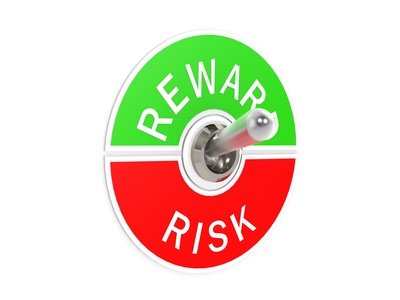
In today’s new normal business, prudent risk-taking can pay off greatly for your company.
Risks abound in today’s market! Products are stolen during transit. Natural disasters occur. Political conflicts arise. Ports go on strike. Securing information is no longer easy – or inexpensive. Customers go out of business. Investments often don’t deliver the expected results. Yet successful executives still take on risk!
Why? Let’s talk about those who do not have the appetite for risk. In my experience in partnering with executives across multiple industries, geographies and company size, I find that those who are unwilling to “make critical decisions” and “take on prudent risk” ultimately fail. In today’s new normal business environment, volatility is the norm and you must be differentiated / have an edge over the competition to thrive. Standing by and waiting until its “safe” to move leaves you in the dust.
Is it radical to recommend building an appetite for risk? NO – assuming you build your appetite for risk, backed with solid decision-making skills. In today’s environment, there is more data available than ever before. The key becomes how to summarize and categorize data into information required for decision-making (to evaluate risk). Next, it is important to turn that information into knowledge with practical application in a way that will elevate your business performance.
So, why increase your appetite for risk? First, two points of clarification: 1) Risk for the sake of risk makes no sense (it’s a form of gambling). 2) Risk that even blurs the lines of integrity is unacceptable. Aside from this foundation, building your appetite for risk makes sense if the risk correlates to an improved end result – a return on investment, improved condition for the people involved, etc. For example, if you are evaluating businesses to purchase, you’d never purchase a business that contained zero risk because the cost would be prohibitive. Instead, often times, business opportunity comes by taking on the “right” risk.
The key is to understand potential risks, the probability of occurrence, the potential seriousness of impacts, and evaluate these risks in relation to the expected returns. For example, a client recently took on the risk of bringing in materials and producing goods prior to confirming sales orders. It seemed radical given the prior risk-adverse culture; however, they were able to dramatically increase service levels and increase margins as a result. Of course, they managed risk – instead of bringing in “extra” materials, they put together a demand plan based on history, sales input and with key customer collaboration to increase the probability of success. Prudent risk paid off!
Increasing your appetite for risk is not for the faint of heart – and requires persistence. Take a step back and think about the risk-reward options. If it makes sense, proceed. Gather data, ask questions, develop options (alternatives for your decision or project), and act. The rewards will be staggering.


